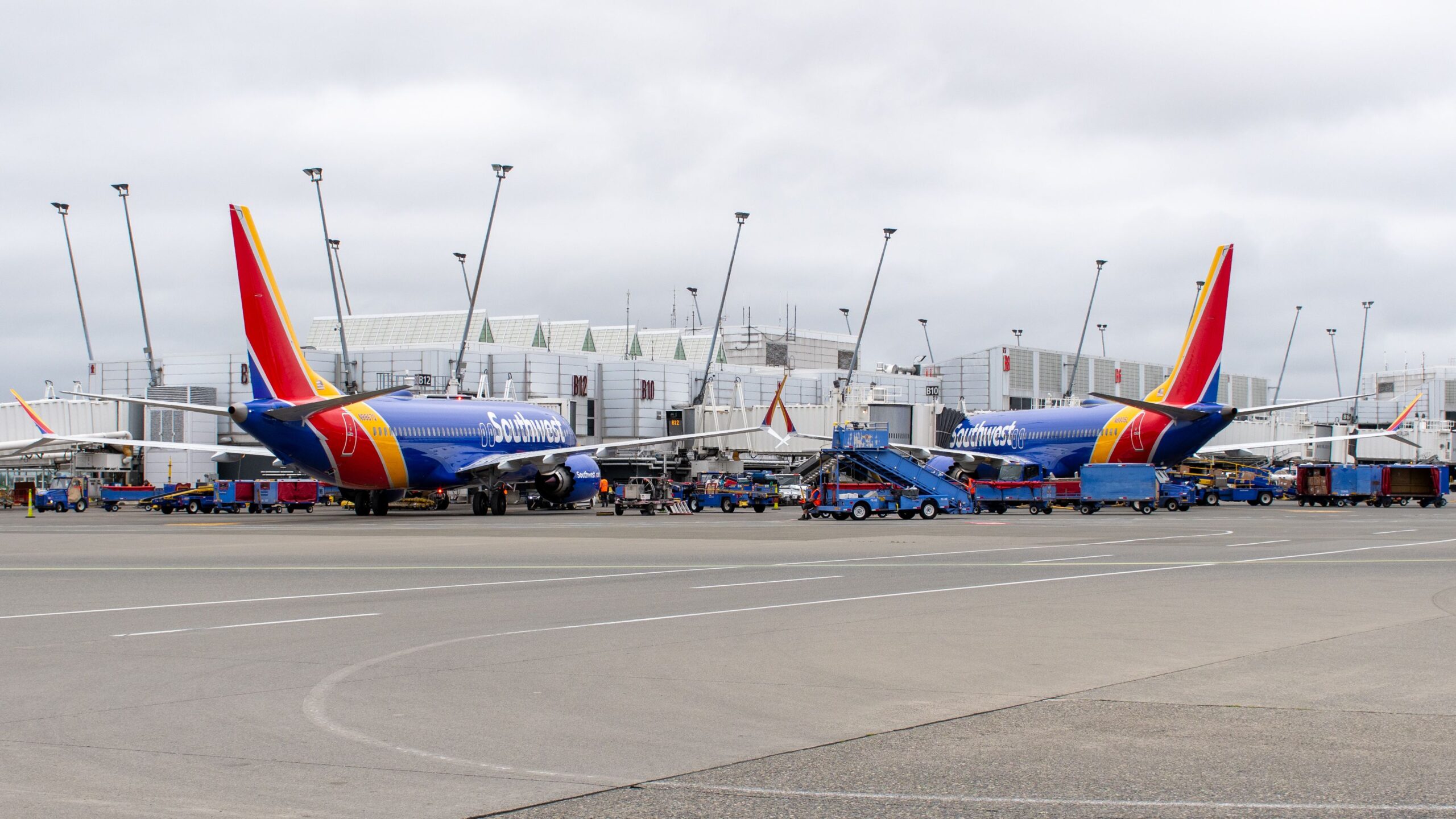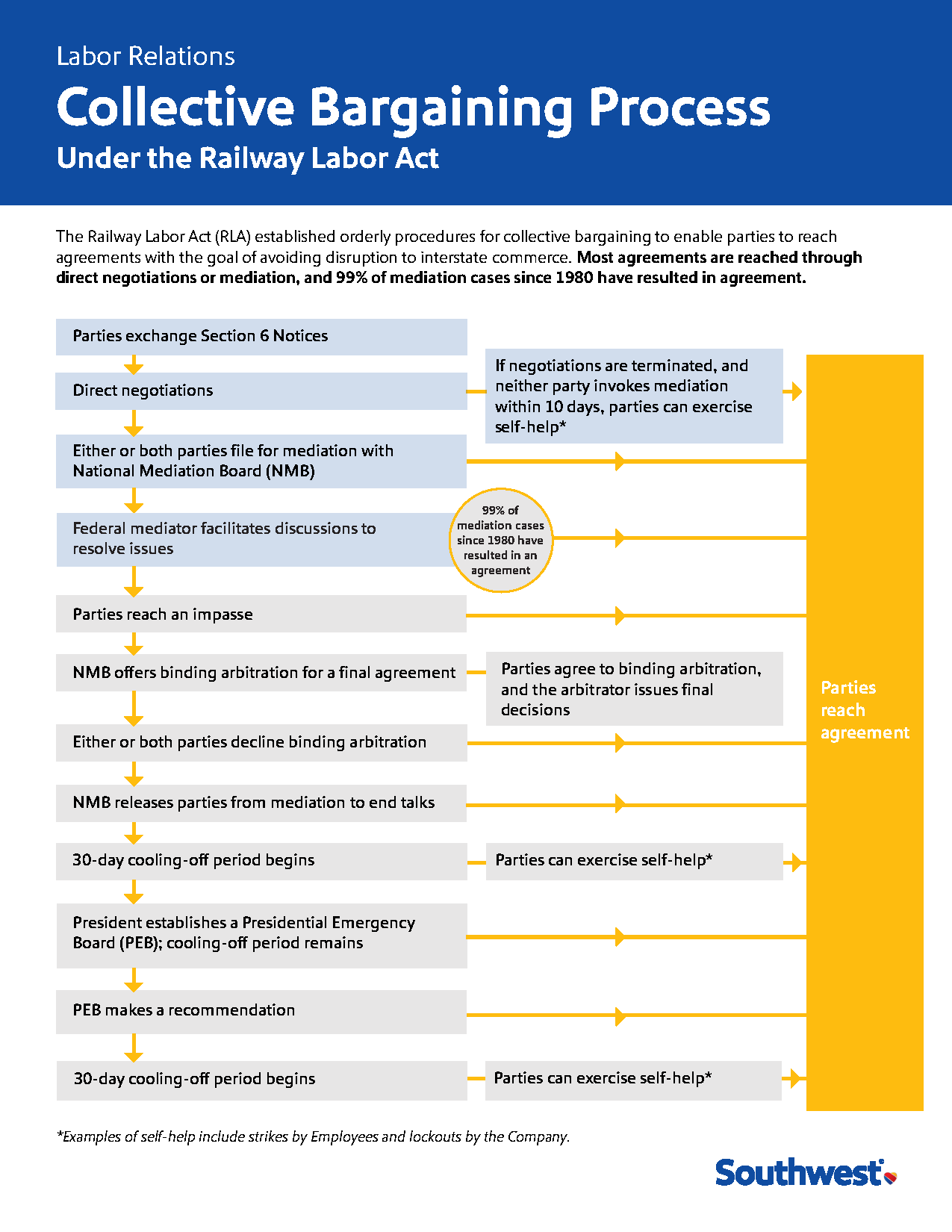Summary
- Southwest Airlines pilots are preparing for a potential strike due to the slow pace of negotiations and the loss of the airline’s unique culture.
- The Southwest Airlines Pilots Association (SWAPA) has opened strike centers to communicate with pilots and exert pressure on management.
- If SWAPA is released to strike, there will be a 30-day cooling-off period, and Southwest Airlines has a flight cancellation policy for affected passengers. Pilot retention and improved training are also concerns for SWAPA.
Southwest Airlines is organizationally staring down another holiday season meltdown as Southwest Airlines’ productive pilots are spinning up strike preparations. The pilots’ union is upset at the pace of negotiations, the lack of management effort at bargaining to find solutions, and the growing loss of Southwest Airlines’ unique culture.
Preparing for release to strike
Southwest Airlines’ relationship with the Southwest Airlines Pilots Association (SWAPA) has, at best, been tense in recent years with ongoing SWAPA concern about the loss of Southwest Airlines’ culture. One may recall last summer. SWAPA sought release from mediated talks to start the clock to strike. Meanwhile, informational pickets continue at Southwest Airlines events by SWAPA members when off-duty, such as below on October 26:
It is clear that, although the National Mediation Board (NMB) did not grant release last summer, SWAPA is still engaged in both negotiations and applying pressure on Southwest Airlines management to get to a deal.
Photo: Joe Kunzler | Simple Flying
One of those means of applying pressure is opening a strike center to facilitate communications with pilots and do everything legally possible to freeze Southwest Airlines’ aircraft in place during a pilots’ strike. When SWAPA opened the first center with another planned for Baltimore soon, SWAPA President Captain Casey Murray made clear in a November 8 SWAPA statement that,
“As our negotiations linger and the holiday travel season approaches, we have to be prepared for a strike, and that’s exactly what we are doing with the opening of these Centers.”
For SWAPA, which sent a leader to monitor Canada’s WestJet pilots’ strike preparations, opening strike centers is a critical investment in strike preparation. Although the WestJet pilot negotiations were concluded with hours to go, opening strike centers by the pilots’ union after a strike authorization vote certainly increased public interest and pressure on WestJet leaders.
What if SWAPA is released to strike?
If SWAPA is released to strike by the NMB, there will be at least a 30-day cooling-off period. So, ticket holders should remember that Southwest Airlines has a gracious flight cancellation policy up until 10 minutes before flight departure, depending on the class of ticket bought, a refund, or flight credit. Below is the process that airline labor negotiations have to follow before a strike:
Graphic: Southwest Airlines
According to the above chart and linked guide, additional steps in the Railway Labor Act must be taken before SWAPA members can legally withhold labor. Simple Flying will also continue to report on developments diligently.
Why is SWAPA preparing to strike?
SWAPA is preparing to strike as SWAPA President Casey Murray shared with Simple Flying on November 10 about the latest round of negotiations,
“Last week was another week wasted with a lack of preparation on the Company’s part. … They don’t want to acknowledge their part in this drawing out so long, and retro pay is becoming the largest issue. We are making progress in work rules which will help our customers.”
At least SWAPA appears to be winning in ongoing efforts to help heal and repair Southwest Airlines after the historic late December 2022 operational meltdown. As Murray shared with Simple Flying when the Strike Authorization Vote began in May,
“What we’re fighting over is scheduling, which directly translates to our own time performance and customer satisfaction. I think that is really what’s critical for the public to know is: we are fighting for them. …. We’re going to extend negotiating capital doing exactly that. That’s shocking if you really think about it.”
Southwest Airlines is also having problems with pilot retention. As such, Murray wants a competitive contract and also improved training for the new pilots to guarantee their success with Southwest Airlines. There is also the below SWAPA tweet from November 6:
The loss of pilots from Southwest Airlines is a concern stressed in SWAPA social media and repeatedly in “SWAPA Number” podcasts. Southwest Airlines is at a clear competitive disadvantage as other airlines settle contracts.
Bottom line
The bottom line appears to be, as Murray stated in the SWAPA November 8 statement about opening strike centers,
“It is unfortunate that we have come to this place, but Southwest Airlines has to recognize the value of its employees and get back to taking care of them so that they will take care of the customer. These Centers are just another step in the process and a physical example of how far our pilots are willing to go to ensure that Southwest Airlines rights the ship. … We are prepared and funded to go the length of the RLA [Railway Labor Act] process.”
As Southwest Airlines founder Herb Kelleher was quoted on March 18, 2018 in Forbes,
“Your employees come first. And if you treat your employees right, guess what? Your customers come back, and that makes your shareholders happy. Start with employees, and the rest follows from that.”
Perhaps this is why Southwest Airlines, since its incorporation in 1967, has averted a strike by its employees in its 56 years. One can hope that Southwest Airlines, which holds seminars about culture and finds its pilots picketing such an event, can keep faith with its founder’s teachings.
Do you think Southwest Airlines will have a pilot’s strike this winter? Please share with civility your assessment in the comments.
Source: Forbes




.jpg)